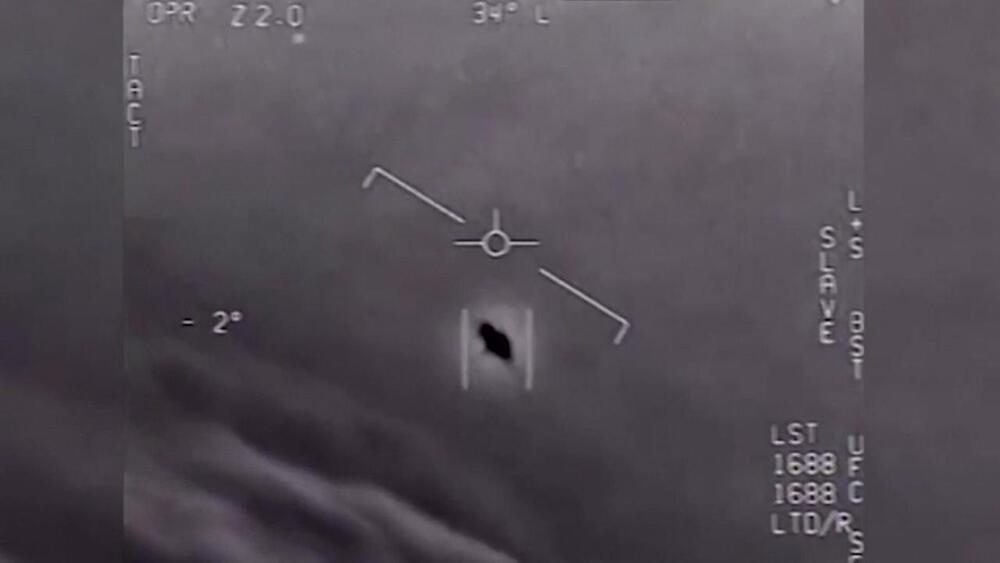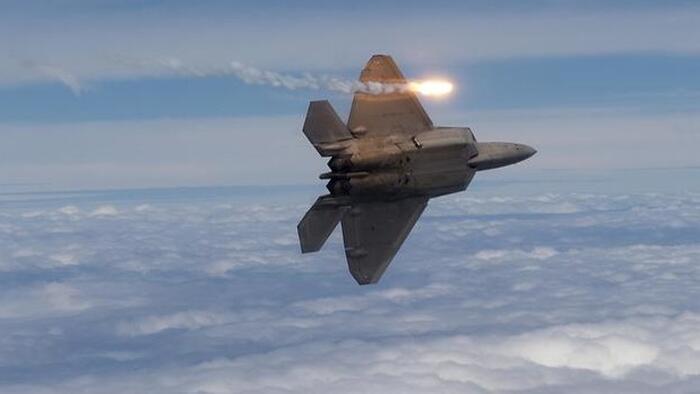Archive for the ‘military’ category: Page 49
Feb 15, 2023
Why stratospheric balloons are used in era of space-based intelligence
Posted by Raphael Ramos in categories: drones, military, satellites, surveillance
WASHINGTON — When the Pentagon revealed last week that a high-flying, Chinese balloon was spotted over the United States, officials said they didn’t expect the airship would add much value to the intelligence China is already gathering through its network of spy satellites.
“Our best assessment at the moment is that whatever the surveillance payload is on this balloon, it does not create significant value added over and above what the [People’s Republic of China] is likely able to collect through things like satellites in low Earth orbit,” a senior defense official told reporters Feb. 2.
While it’s unclear what information the uncrewed airship gathered before the Pentagon shot it down Feb. 4, experts say balloons loitering at high altitudes can offer some advantages over satellites and drones — or could at least augment their intelligence, surveillance and reconnaissance capabilities.
Feb 15, 2023
Ex-Google CEO says AI as revolutionary for warfare as nuclear weapons
Posted by Gemechu Taye in categories: military, robotics/AI
Ex-CEO of Google, Eric Schmidt, advocated for implementing AI for the U.S. military use to compete against China and other rivals.
Former Google CEO Eric Schmidt has advocated for the military use of artificial intelligence (AI) to build a more robust and adaptable defense system for the United States against China and other rivals.
“Every once in a while, a new weapon, a new technology comes along that changes things,” he told Wired.
Continue reading “Ex-Google CEO says AI as revolutionary for warfare as nuclear weapons” »
Feb 14, 2023
1950s Fighter Jet Air Computer Shows What Analog Could Do
Posted by Jose Ruben Rodriguez Fuentes in categories: computing, information science, military

Imagine you’re a young engineer whose boss drops by one morning with a sheaf of complicated fluid dynamics equations. “We need you to design a system to solve these equations for the latest fighter jet,” bossman intones, and although you groan as you recall the hell of your fluid dynamics courses, you realize that it should be easy enough to whip up a program to do the job. But then you remember that it’s like 1950, and that digital computers — at least ones that can fit in an airplane — haven’t been invented yet, and that you’re going to have to do this the hard way.
The scenario is obviously contrived, but this peek inside the Bendix MG-1 Central Air Data Computer reveals the engineer’s nightmare fuel that was needed to accomplish some pretty complex computations in a severely resource-constrained environment. As [Ken Shirriff] explains, this particular device was used aboard USAF fighter aircraft in the mid-50s, when the complexities of supersonic flight were beginning to outpace the instrumentation needed to safely fly in that regime. Thanks to the way air behaves near the speed of sound, a simple pitot tube system for measuring airspeed was no longer enough; analog computers like the MG-1 were designed to deal with these changes and integrate them into a host of other measurements critical to the pilot.
Continue reading “1950s Fighter Jet Air Computer Shows What Analog Could Do” »
Feb 14, 2023
The ocean science community must put science before stigma with anomalous phenomena
Posted by Jose Ruben Rodriguez Fuentes in categories: climatology, government, military, science, sustainability
Even more extraordinary, during a 2021 interview on CBS 60 Minutes, former Navy pilots David Fravor and Alex Dietrich provided a detailed description of their encounter with a UAP while conducting pre-deployment training with the USS Nimitz aircraft carrier strike group in 2004. While flying their F/A-18F Super Hornet aircraft, they initially observed an area of roiling whitewater on the ocean surface below them. Hovering just above that was a “white Tic Tac looking” UAP. The whitewater may have indicated the presence of a larger UAP below, or that the UAP they were observing had recently emerged from the sea below it, indicating the occurrence of unidentified undersea phenomena (UUP).
The implications of these observations are profound. Society may be on the verge of answering one of the greatest questions regarding our existence — are we alone? Yet, the vast majority of established scientists across the globe have shown little interest, and this remains the case with the ocean science community.
How is it that these anomalous observations have not risen to the level of other science priorities, such as climate change? Simply put, stigma. The attention given by many non-scientific, fringe enthusiasts to the UAP arena has tainted the topic, repulsing those who rightly seek to maintain their scientific integrity and professional reputation. Additionally, the U.S. government thwarted objective analysis of UAPs out of a concern that adversaries would use them as a psychological warfare tool to sow mass hysteria and panic.
Feb 14, 2023
AI flies modified F-16 jet for 17 hours all by itself. Is this the future of the Air Force?
Posted by Jose Ruben Rodriguez Fuentes in categories: drones, military, robotics/AI
The skies were clear as the VISTA X-62A — a one-of-a-kind training aircraft built by Lockheed Martin on an F-16 platform — soared over the Mojave Desert. The cockpit of the high-tech jet is littered with expensive and highly sensitive avionics that enable pilots to perform their missions. But the designers could have crammed in even more technology if it were not for the two pilot seats. Their wish might come true in the not-so-distant future. That’s because this was not your regular sortie.
The training jet was recently reported to have flown 17 hours entirely operated by an artificial intelligence (AI) system, which could open the floodgates for completely autonomous jet fighters and drones. This is the first time that an AI has flown a tactical aircraft for this long.
The VISTA X-62 is perhaps the most powerful and versatile training jet in the world. It’s essentially an upgraded F-16D with Block 40 avionics installed, but with a lot of room for installing and trying out different hardware quickly and easily, that mimics the flight controls of other aircraft, enabling the aircraft itself to act as its own ground simulator. Those who’ve flown the X-62 describe it as a Swiss army knife that they can use to attach lots of different things to the airplane.
Oddly enough nearly 50 percent of the trees near the abomb blast in japan survived 😀
In the city of Nagasaki, there are dozens of hibaku trees, or “A-bomb trees” that show scars from the heat and blast of the atomic bombing 74 years ago. People in the city see the trees as eyewitnesses of the attack and take extra care of them.
The two oak trees in Sachiko Yamashita’s garden have long gashes all the way down their trunks. These are the physical scars of the 1945 bombing.
Feb 13, 2023
Philippine Coast Guard says Chinese ship aimed laser at one of its vessels
Posted by Raphael Ramos in category: military
The Philippine Coast Guard has accused a China Coast Guard ship of pointing a “military grade” laser at some of its crew, temporarily blinding them, aboard a vessel in contested waters of the South China last week.
The Chinese ship also “made dangerous maneuvers” in approaching within 150 yards (137 meters) of the Philippine vessel, the Philippine Coast Guard alleged in a statement posted on its official Facebook page, with photos purporting to show the laser’s green beam.
The incident allegedly occurred on February 6 near Ayungin Shoal, also known as Second Thomas Shoal, in the Spratly Islands chain, known in China as the Nansha Islands. China calls the shoal Renai Reef.
Feb 13, 2023
5 Ways ChatGPT Will Change Healthcare Forever, For Better
Posted by Gemechu Taye in categories: biotech/medical, health, military, mobile phones, robotics/AI
Over the past decade, I’ve kept a close eye on the emergence of artificial intelligence in healthcare. Throughout, one truth remained constant: Despite all the hype, AI-focused startups and established tech companies alike have failed to move the needle on the nation’s overall health and medical costs.
Finally, after a decade of underperformance in AI-driven medicine, success is approaching faster than physicians and patients currently recognize.
The next version, ChatGPT4, is scheduled for release later this year, as is Google’s rival AI product. And, last week, Microsoft unveiled an AI-powered search engine and web browser in partnership with OpenAI, with other tech-industry competitors slated to join the fray.
Continue reading “5 Ways ChatGPT Will Change Healthcare Forever, For Better” »
Feb 12, 2023
Third High-Altitude Airborne Object Shot Down
Posted by Saúl Morales Rodriguéz in category: military
One day after the US shot down a ‘cylindrical, silverish gray’ object in the northeast arctic region of Alaska, another unidentified airborne object was shot down by the US military over northern Canada on Saturday — making it the third time in just over a week that jets were deployed to neutralize foreign craft.
















